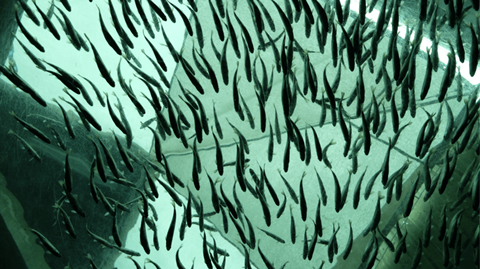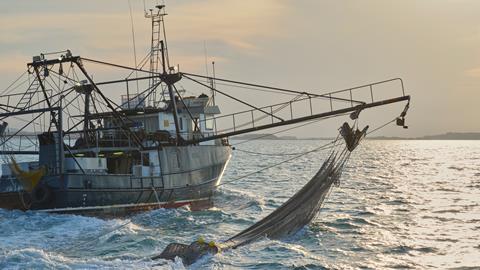- News
- Subscribe

Get full access to World Fishing & Aquaculture content
Including the digital magazine, full news archive, special reports, webinars and articles on innovations and current trends in the commercial fishing and aquaculture industries.
- Expert analysis and comment
- Unlimited access to in-depth articles and premium content
- Full access to all our online archive
Alternatively REGISTER for website access and sign up for email alerts
- Industry Database
- Events
Icelandic Fisheries Exhibition
Íslenska sjávarútvegssýningin
Fish Waste For Profit Conference



The largest commercial fishing exhibition in the North Stærsta kaupstefna um sjávarútveg á norðurslóðum Maximise return on investment from potentially discarded parts of the catch Visit the IceFish Website Visit the IceFish Website Visit the Fish Waste for Profit Website
- Special Reports
By-Product Solutions
Smart, Connected Seafood Processing
Land-Based Aquaculture Technology
Greener Fishing
January-February 2025 March-April 2025 July-August 2025 November-December 2025 



Cutting waste and maximising value Robotics, analytics software and other Industry 4.0 technologies are helping to scale-up productivity New production systems are escalating the industry’s contribution to global food security Fisheries are becoming increasingly responsible and sustainable thanks to new technologies and initiatives Read More Read More Read More Read More
Opinion: How Pacific bluefin tuna’s woes were reversed

Turnaround owes much to science and collaboration, explains leading researcher and International Scientific Committee member Dr Michel Dreyfus
Unfortunately, we didn’t realise the amount of reduction in the Pacific bluefin population until 2013. There were some signs that there was overexploitation, especially in the Western Pacific, with Japan in particular seeing that even with higher regulatory efforts, they weren’t catching the amounts they used to. But, in the Eastern Pacific, Mexico specifically, and within the IATTC, we didn’t see any signs of overexploitation because our fisheries were catching all they wanted to. Then came the ISC meetings, where we assess Pacific bluefin. In 2013, we got the first assessment that scientists were satisfied with, and that’s when we realised the spawning biomass population was just 2%.
Basically, what caused the problem was an over-catch of small bluefin (10-15cm, weighing 2-3 kgs) by very large fleets of artisanal vessels. These were fishing for a number of species, but they caught lots of small bluefin as well, and often this was by-catch. ISC assessments show this was happening from the 1990s all the way to 2012, with 80% of the bluefin tuna caught being less than one year old juveniles. These small sizes and ages aren’t seen in the Eastern Pacific. It was the Western artisanal fisheries, catching vast quantities of small juveniles, that was the main problem for the species.
Following the initial ISC assessment in 2013 (these are now done every two years), we decided to form a group in which countries interested in Pacific bluefin could participate in discussions. These countries are represented on the east coast with the Inter-American Tropical Tuna Commission (IATTC) and on the west coast through the Western and Central Pacific Fisheries Commission (WCPFC). Pacific bluefin migrate across the entire ocean, so we wanted to cover the whole population. This is where we now make conservation decisions that are brought to both coast’s commissions.
The first challenge was to raise the 2% spawning biomass. Transpacific measures were quickly enforced, including catch limits for all of the Japanese, American and Mexican fleets, since they have a lot of bluefin fisheries, including longliners, purse seiners, etc. We started to see a really fast recovery. In 2020, the spawning biomass reached 10%, and the initial results from this year’s new assessment indicate we’ve already reached 23% spawning biomass. As such, the population no longer holds an overexploited status.
Some fisheries have already received raised catch limits based on the results of the 2020 assessment, and this year, there’s going to be a broader increase because of the population’s new “good status”. There are also a lot of measures in place so the population doesn’t go down again. We have to take care that there’s no return to overexploited juvenile bluefin of less than one year of age. Everything is in place so the population will continue to be in a safe zone.
Continue this article…
Already subscribed? SIGN IN now

Register for a FREE one-month trial to continue this article
Want to read more before deciding on a subscription? It only takes a minute to sign up for a free account and you’ll get to enjoy:
- Weekly newsletters providing valuable news and information on the commercial fishing and aquaculture sector
- Full access to our news archive
- Live and archived webinars, podcasts and videos
- Articles on innovations and current trends in the commercial fishing industry
- Our extensive archive of data, research and intelligence
Get more free content sign up today
Ready to subscribe? Choose from one of our subscription packages for unlimited access!

